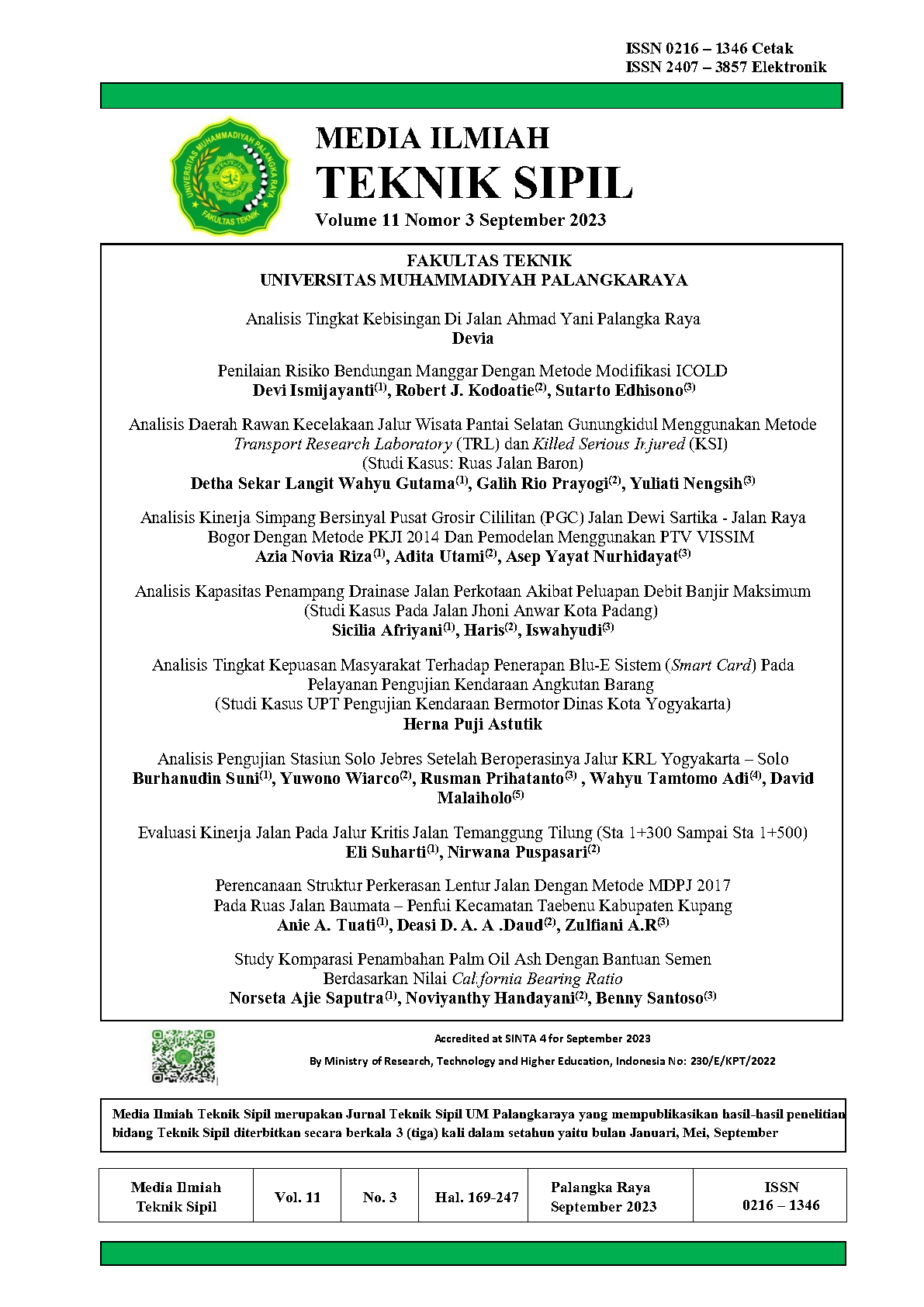Analisis Tingkat Kepuasan Masyarakat Terhadap Penerapan Blu-E Sistem (Smart Card) Pada Pelayanan Pengujian Kendaraan Angkutan Barang (Studi Kasus UPT Pengujian Kendaraan Bermotor Dinas Kota Yogyakarta) Analysis Of Community Satisfaction Level Against Application Of Blu-E System (Smart Card) In Goods Transportation Vehicle Testing Services (Case Study Of UPT Testing Motorized Vehicles Yogyakarta City Service)
Main Article Content
Abstract
The Yogyakarta City Department of Transportation (Dishub) officially launched the Electronic Test Passing Proof (BLU-E) or more familiarly known as the Smart Card as proof of passing the KIR test. The BLU-E in the form of a 'smart card' is an innovation to replace the previous test evidence which was still in the form of a book. The form of BLUe itself is shaped like a hologram sticker, with a QR Code, which will be affixed to the windshield of the freight vehicle. By replacing the proof of vehicle testing using the old method in the form of a KIR book with a smart card, the community will certainly experience changes in habits which of course need to be measured to know the response to the level of community satisfaction. The research method is in the form of descriptive quantitative by utilizing the SERVQUAL Dimension used to assess customer satisfaction consisting of tangible, reliability, responsiveness, assurance, and empathy. Methods of data collection by filling out questionnaires. From the calculation above results, the service user satisfaction index value is 88%. So, based on the rating interval, it can be concluded that the respondent was "Very Satisfied" with the service provided by the UPT Motor Vehicle Testing Office of the City of Yogyakarta
Downloads
Article Details

This work is licensed under a Creative Commons Attribution-ShareAlike 4.0 International License.
All rights reserved. This publication may be reproduced, stored in a retrieval system, or transmitted in any form or by any means, electronic, mechanical, photocopying, recording.
References
Albertus, Frendly. Albertus, Wesley Liana. Analisis Pelayanan Publik Pasca Reformasi Dalam Tinjauan Sosiologi. Journal Of Policy Bureaucracy Management. Volume 1 Nomor 1 Mei 2020. Universitas 17 Agustus 1945 Samarinda, Indonesia
Cronin Jr., J. J., & Taylor, S. (1992). Measuring Service Quality: A Reexamination and Extension. The Journal of Marketing, 56, 55-68.
Giese and J. A. Cote, 2000. Defining consumer satisfaction, Academy of Marketing Science Review, Vol. 1. 2000. pp. 1-24.
Keputusan Menteri Pendayagunaan Aparatur Negara Nomor: 63/Kep/M.Pan/7/2003 Tentang Pedoman Umum Penyelenggaraan Pelayanan Publik
Kotler, Philip. 2002. Manajemen Pemasaran. Jilid 1. Jakarta: Prenhallindo.
Lupiyoadi, Rambat. 2013. Manajemen Pemasaran Jasa Berbasis Kompetensi, Edisi 3. Salemba Empat. Jakarta
Parasuraman, A., Berry, L.L dan Zeithaml, V.A. 1988. SERVQUAL: A Multiple-Item Scale for Measuring Consumer Perception of Service Quality; Journal of Retailizing, Vol. 64(1).pp. 12-40.
Peraturan Menteri Perhubungan Republik Indonesia No. PM 133 tahun 2015 tentang Pengujian Berkala Kendaraan Bermotor (Permenhub PBKB)
Purwanto, E.A., Tyasianti, D., Taufiq, A., dan Novianto, W. 2017. Modul Pelatihan Calon PNS Pelayanan Publik. Jakarta: Lembaga Administrasi Negara.
Putri, D.L..2010. Analisis Tingkat Kepuasan Masyarakat Terhadap Pelayanan Publik pada Kantor Pelayanan Terpadu Bankinang. Pekbis Jurnal, Vol.2 (2), pp. 318 – 325.
Rivai. 2018. Manajemen Sumber Daya Manusia untuk Perusahaan: Dari Teori ke Praktik. Jakarta: PT Rajagrafindo Persada.
Undang-Undang nomor 22 tahun 2009 tentang Lalu Lintas dan Angkutan Jalan (PP LLAJ)
